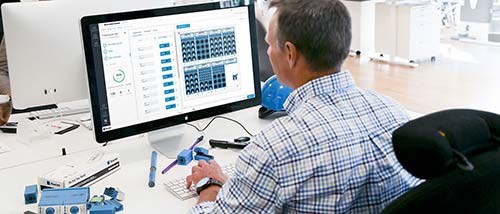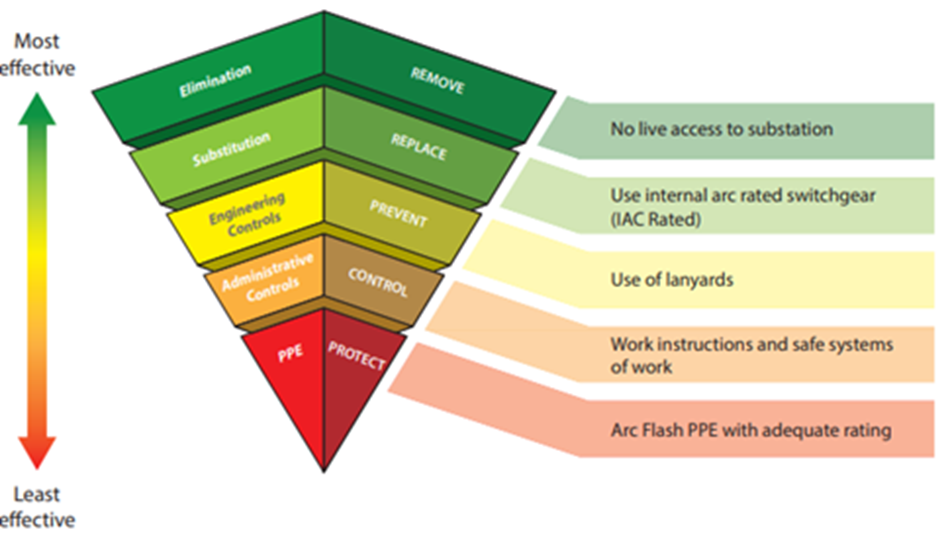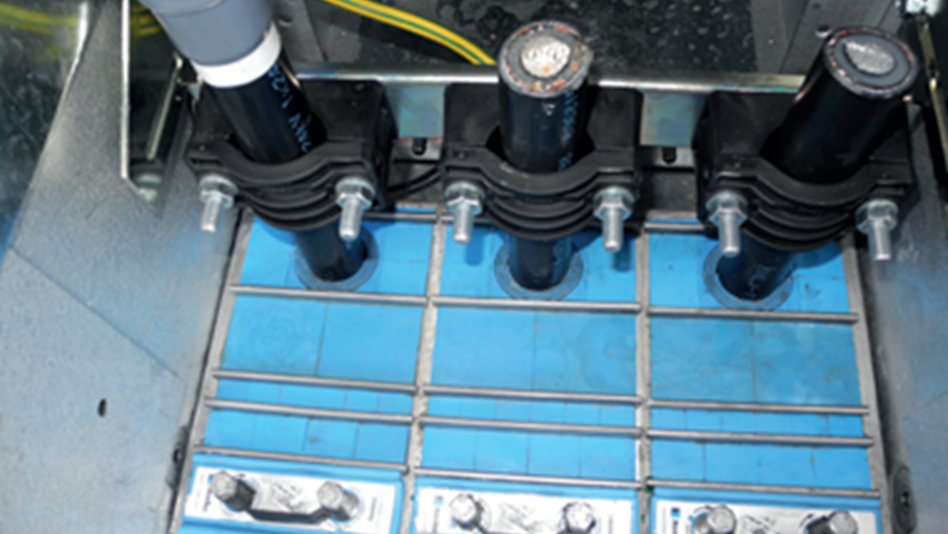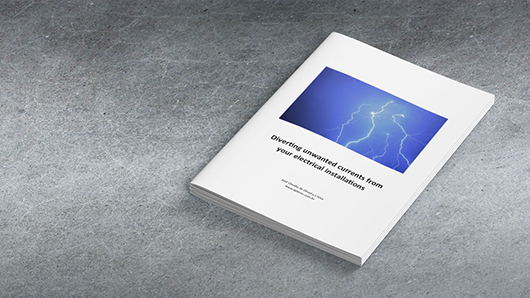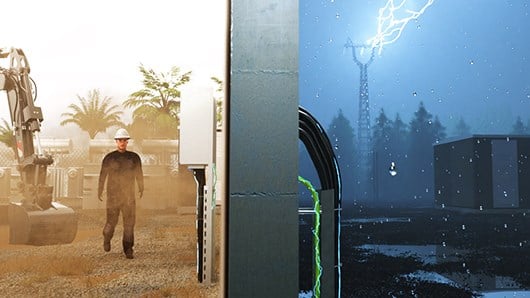Reliable switchgear is critical for safe and stable power distribution, and it is important to ensure protection against relative humidity to avoid the risk of partial discharge activity and arc-flash.
By using switchgear that have passed internal arc type testing, as prescribed within the North American standard IEEE C37.20.7 and optional within the widely used standard IEC 62271-200, you will come a long way towards preventing damages to equipment and ultimately save lives.
Proper protection in case of fault
As per North American NIOSH (National Institute for Occupational Safety and Health) and UK Management of Health and Safety at Work Regulations stipulates, (see figure 1 below), the removal of risk by limiting access is the most efficient protection method. The second most efficient protection method is to replace the non-internal arc rated switchgear with properly tested IAC rated equivalents. By using internal arc rated switchgear you will make sure that the internal arc-flash and potential following explosion are contained.
In order to ensure a secure and reliable power distribution which is a necessity for our society, safety responsible engineers and duty holders managing electrical networks should work towards removing the use of oil switchgear which cannot be internal arc tested and promote the use of type tested internal arc rated switchgear.
To successfully pass internal arc type testing, it is recommended to use mechanical cable sealing solutions, tested for blast and prevention of fire spreading. In addition to this, properly tested cable sealing solutions will provide protection for switchgear and other equipment against water and dust, both known causes of arc.
Learn more on how to reduce risk by watching the webinar “How to avoid switchgear failure” with white paper author Ian Naylor, Threepwood, and sealing specialist Gavin Cornall, Roxtec.
